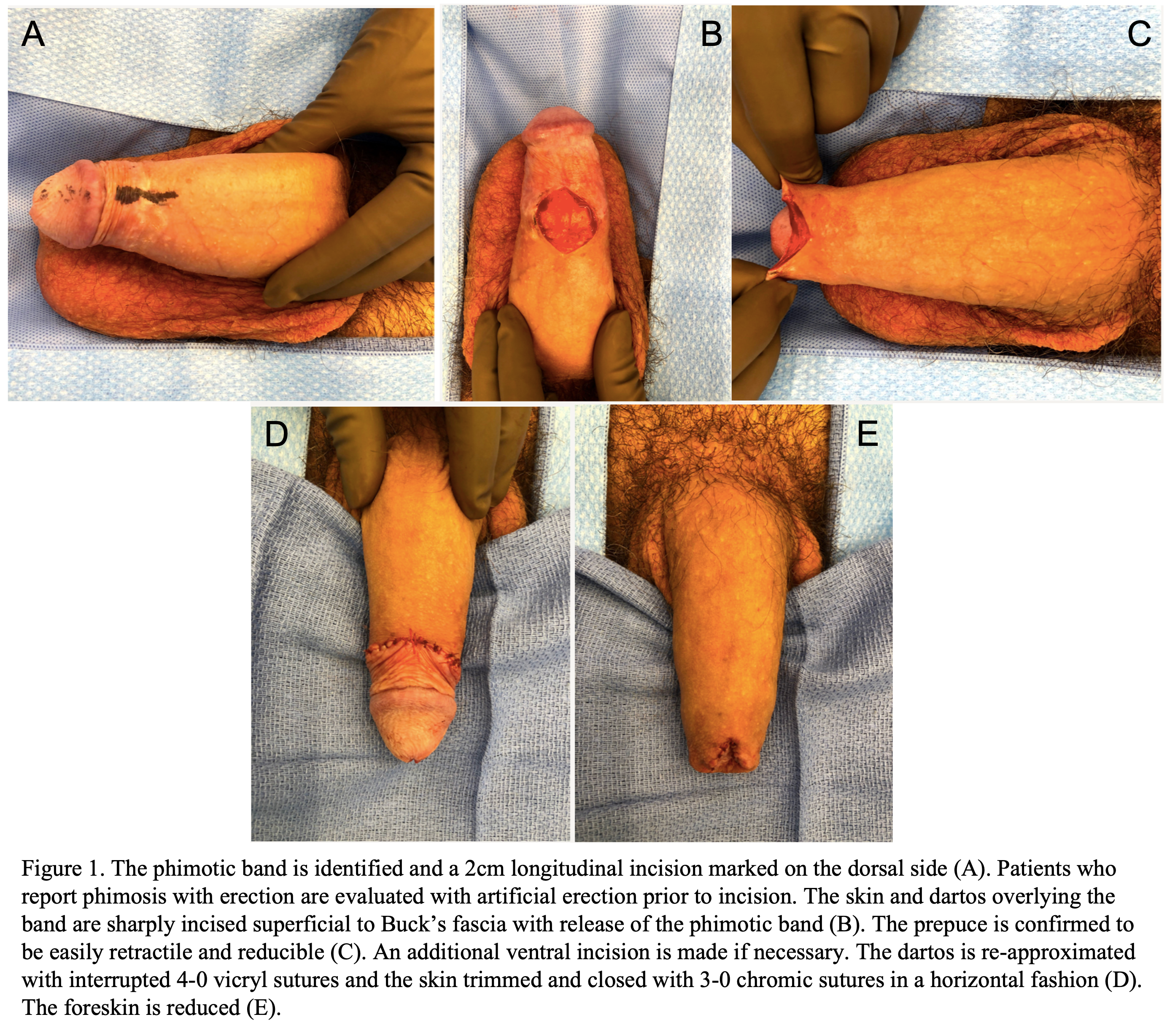Back
Poster, Podium & Video Sessions
Best Poster Award
MP20: Trauma/Reconstruction/Diversion: External Genitalia Reconstruction and Urotrauma (including transgender surgery) I
MP20-18: Heineke-Mikulicz Preputioplasty: Surgical Technique and Outcomes
Saturday, May 14, 2022
7:00 AM – 8:15 AM
Location: Room 225
Alex Xu*, Kirtishri Mishra, Lee Zhao, New York, NY
- AX
Poster Presenter(s)
Introduction: Traditional circumcision and dorsal slit remain the mainstay treatments of bothersome phimosis. As the rate of neonatal circumcision in the U.S. over the last decade has declined, the number of patients with phimosis who wish to retain their foreskins will likely increase. Few published reports describe foreskin-preserving surgical treatment for phimosis in adults. We provide a summary of the surgical technique and outcomes for Heineke-Mikulicz preputioplasty (HMP).
Methods: Patients who underwent HMP by a single surgeon (LCZ) from May 2017 to May 2021 were retrospectively reviewed. Statistical analysis was performed to evaluate patient demographics, intraoperative variables, and outcomes (summarized in Table 1). The phimotic band is incised vertically on the dorsal aspect of the penis until the foreskin can be easily retracted. The vertical incision is then closed horizontally to increase the size of the preputial ring. Figure 1 details key technical steps.
Results: Seven patients underwent HMP. Median age was 47.3 (range: 35.4–70.2) and median BMI 24.3 (20.9–29.3). Indication for HMP was phimosis in 5/7 patients, paraphimosis in one patient, and frenular tethering in one patient. Six patients requested HMP as a personal preference and one patient was an intraoperative consult. Three patients trialed topical steroid cream. Two patients had undergone prior frenulectomy leading to iatrogenic scar formation.
Median operative time was 45.5 (16–59) minutes. Two patients required both dorsal and ventral incisions. One patient underwent concurrent frenulectomy. No intraoperative complications were reported and all patients were discharged the same day. At median follow-up of 1.8 (1–15) months, 6/7 patients reported resolution of phimosis. One patient reported bothersome phimosis secondary to scar formation at the incision and was treated successfully with topical triamcinolone.
Conclusions: HMP is a safe and effective treatment for phimosis in patients who would like to avoid circumcision or during intraoperative consults where patient preferences may not be clear.
Source of Funding: None


Methods: Patients who underwent HMP by a single surgeon (LCZ) from May 2017 to May 2021 were retrospectively reviewed. Statistical analysis was performed to evaluate patient demographics, intraoperative variables, and outcomes (summarized in Table 1). The phimotic band is incised vertically on the dorsal aspect of the penis until the foreskin can be easily retracted. The vertical incision is then closed horizontally to increase the size of the preputial ring. Figure 1 details key technical steps.
Results: Seven patients underwent HMP. Median age was 47.3 (range: 35.4–70.2) and median BMI 24.3 (20.9–29.3). Indication for HMP was phimosis in 5/7 patients, paraphimosis in one patient, and frenular tethering in one patient. Six patients requested HMP as a personal preference and one patient was an intraoperative consult. Three patients trialed topical steroid cream. Two patients had undergone prior frenulectomy leading to iatrogenic scar formation.
Median operative time was 45.5 (16–59) minutes. Two patients required both dorsal and ventral incisions. One patient underwent concurrent frenulectomy. No intraoperative complications were reported and all patients were discharged the same day. At median follow-up of 1.8 (1–15) months, 6/7 patients reported resolution of phimosis. One patient reported bothersome phimosis secondary to scar formation at the incision and was treated successfully with topical triamcinolone.
Conclusions: HMP is a safe and effective treatment for phimosis in patients who would like to avoid circumcision or during intraoperative consults where patient preferences may not be clear.
Source of Funding: None



.jpg)
.jpg)